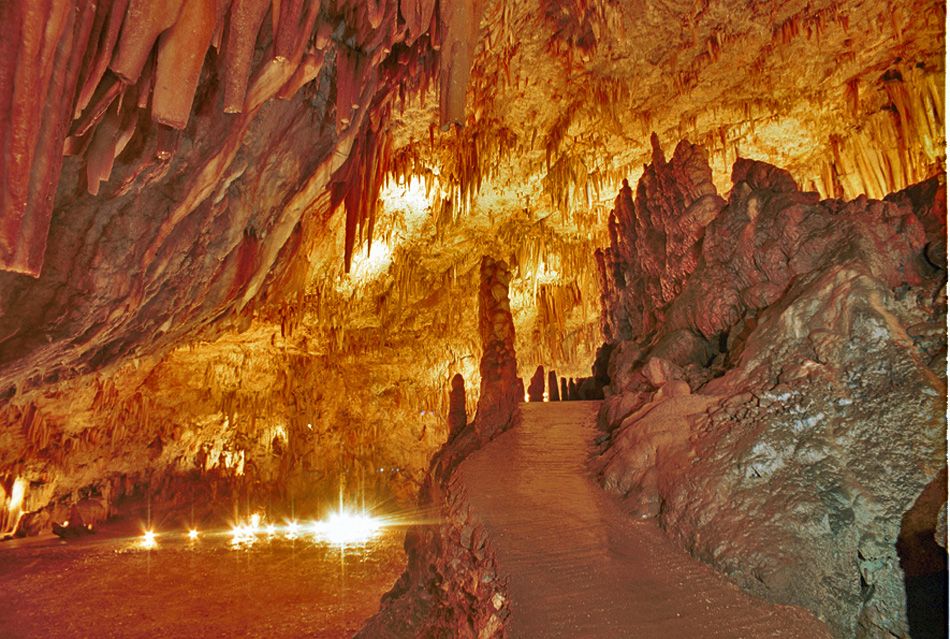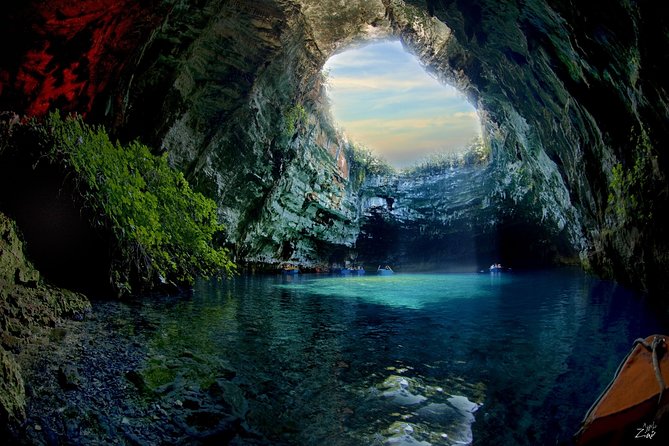Kefalonia is the largest of the “Seven islands” in the Ionian sea, its area measuring approximately 780sq km. It lies opposite the entrance to the Gulf of Patras between the islands of Ithaca, Zakynthos, and Lefkada.
The limestone rock formations of Kefalonia are easily eroded by underground waters. Over the centuries, the erosive effects and dissolving action of subterranean water have led to the creation of many underground caustic caves, most of the cavernous.

The best known of these caves is the cave-lagoon of Melissani and the cave of Drongarati.
Drongarati cave
The cave of Drongarati is about 5km to the south of Sami, on the main Sammi- Argostoli road. According to the popular tradition in the area, the cave owes its name to a dragon that was believed by the locals to live in it.
The cave consists of two parts. The first was once an extension to the main cave. Its roof collapsed, transforming it into a depression in the ground. The part of the cave that is now open to the public consists of a large chamber about 100m long.
This is divided into two areas by massive stone blocks that have broken away from the roof forming a natural platform decorated with translucent stalactites, called the Royal Balcony. Below this balcony extends the second area, called the Apotheosis Room. It has exceptionally good acoustics and has been converted into a concert hall seating an audience of 500.

Melissani cave
The Melissani cave lagoon is only 500m away from the settlement of Karavomylos and about 3km from Sami.
According to the local tradition, the name of the cave probably derives from the swarms of wild bees that are said by the locals to have lived in the cave.
Other legends speak of the shepherdess called Melissanthi who fell into the lake while searching for a lost sheep. Others associate it with the nymph Mellisanthi who drowned herself in the water when Pan rejected her love.
The cave lagoon of Melissanthi is over 150m long. Part of its roof collapsed, admitting sunshine into its interior. This lights up the water and creates wonderful images. The effect is enchanting, especially when the sun’s rays fall vertically on the surface of the water.
Today visitors travel in boats to see the uncovered area of the lake. The walls of the cave are covered with stalactites and there are many springs beneath the surface of the water on the northwest side.





